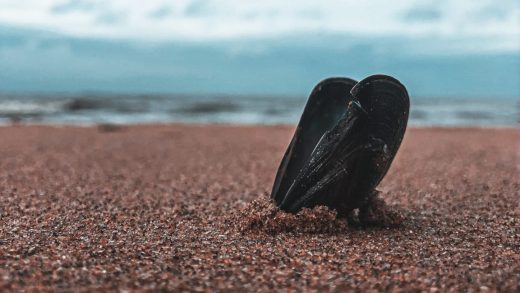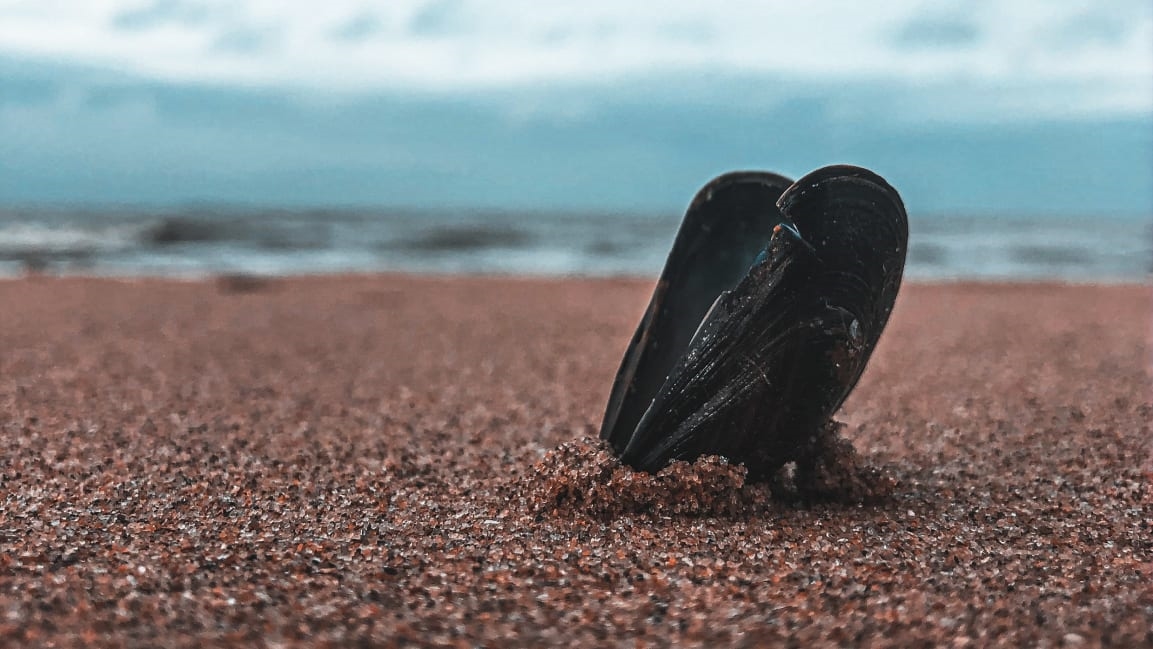Want to clean up microplastics in the ocean? We just need more mussels
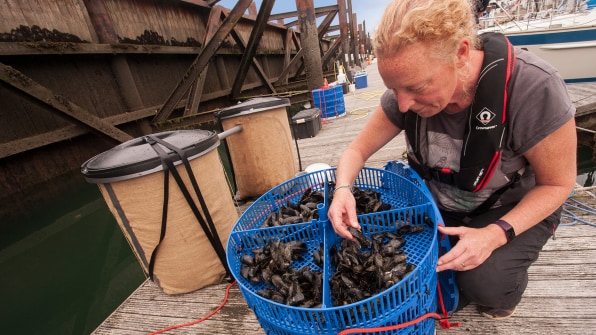
Microplastics—tiny pieces of plastic, smaller than 5 millimeters across—are abundant in our oceans and waterways, breaking off from bigger pieces of plastic pollution, wearing off of tires that enter the water with road runoff, and washing out of our clothes and traveling through wastewater treatment facilities. Collecting these microplastics is difficult: When researchers try to use fine sieves to grab them out of the ocean, they often end up collecting a lot of organic material and marine life as well.
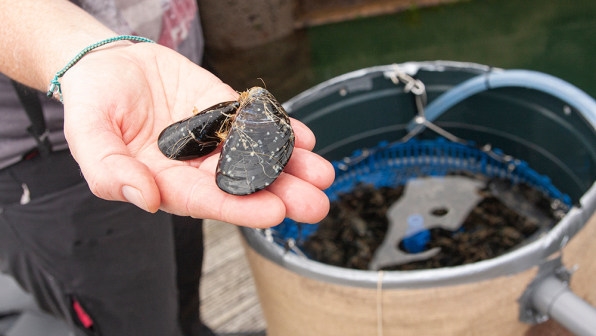
Knowing that mussels are “naturally voracious filter feeders,” Lindeque says (one adult mussel can filter up to 15 gallons of water a day), she thought they might be able to look to nature to address this issue of microplastic pollution.
The mussels currently filtering the water in the Plymouth marina are part of a series of field trials; already, Lindeque and her team have completed research in the lab for which 5 kilograms of mussels (about 11 pounds, or roughly 300 mussels) were placed in a flow tank, which mimics currents, along with phytoplankton for food and microplastics. In that experiment, the mussels filtered out more than 250,000 microplastics per hour. That’s in terms of pieces; computer modeling at the lab found that mussels could filter up to 25% of the microplastics in the water.
Those microplastics ended up encased in the mussels’ poop, which naturally sinks down the water column. Researchers were able to collect all that excrement and dispose of it. In the future, Lindeque hopes to research if this plastic-filled poop could be used as a biofuel, since it’s rich in carbon. In the field trials, the team uses nets with receptacles underneath to catch all that waste, so that the plastic and poop pieces don’t sink all the way down to the ocean floor. (This research has received funding from the Waitrose Plan Plastic grant fund, which uses the money from the sale of plastic carrier bags in Waitrose grocery stores toward solutions to cut plastic pollution in the U.K.)
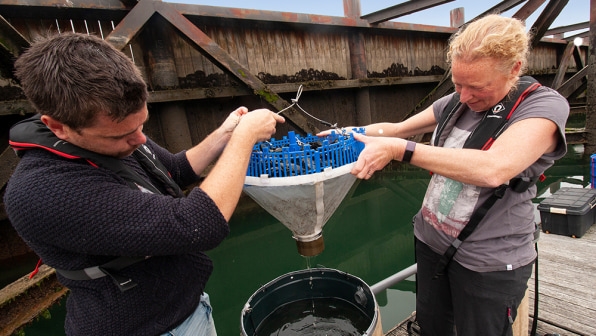
Because of their exceptional filtering power, mussels have been used to clean up polluted water as “blue infrastructure” and to monitor for heavy metals. Using them to clean up microplastics is a first, though, Lindeque says. As research continues, she’ll focus on using mussels where microplastics enter the water, like near a storm drain or at the end of the pipeline of a water treatment plant, or in marinas and harbors.
All this happens without any harm to the mussels, Lindeque says. Smaller pieces of plastic called nanoparticles may slip through the mussel’s membranes and get into their tissue, but the microplastics are too big. While some previous research has found that microplastic exposure could harm mussels—mainly their ability to produce strong byssal threads, the fibers that bind mussels to a rock, or to one another—those experiments were done at microplastic concentrations much higher than occur in natural environments.
Plus, mussels are already eating plastic, anyway. By monitoring them, keeping them in cages so they survive predators, and collecting their plastic-filled poop, their regular process could be used to help clean the ocean. It’s not a complete solution—mussels can’t reach all the microplastics, and we still need to work toward reducing single-use plastic and moving toward a circular economy, Lindeque says. But it could make a difference, in a few ways. “The beauty is because this is a nature-based solution,” she says, “by putting them back into nature, we’re helping to increase biodiversity and rewilding what was there anyway.”
(55)

